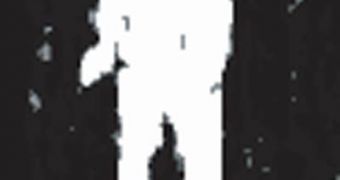Although this imaging technique has been around for some time, researchers have yet to find a practical application for it. Now, a new study into the generation of such images may open ways towards applying the technique in satellite imaging through clouds or even smoke. Yanhua Shih from the University of Maryland, along with Ron Mayers and Keith Deacon of the US Army Research Laboratory have been recently able to create a ghost image of an opaque object, while previous imaging methods used light passed through stenciled patterns.
Ghost imaging basically compares light coming from two light sources: the imaged object and light from the source used to illuminate the respective object. For example, light emitted from the source is first split into two beams, one traveling towards the object and the other to the photon-counting detector. Because photons are emitted simultaneously and the detector is located at an equal distance in relation with the source and the targeted object, they should in fact appear on the same object. When this happens, both photons are registered as a pixel in the final image. The problem is that researchers cannot agree what laws to use to describe the phenomenon, quantum mechanics laws or classical physics laws.
In the experiment conducted by the Maryland researchers, light was reflected or scattered off an opaque object in order to create a ghost image. By doing so, one day satellites using light directly from the Sun could render ghost images of objects hidden behind clouds or even out of the satellites' direct view.
They used as opaque object a toy soldier located at a distance of 45 centimeters from the light source. A photon detector captured light scattered of the object, while the light source was located at an equal distance to that in relation to the imaged object. The detector was able to pinpoint about one thousand coincident pairs of photons, and create a ghost image of the toy soldier.
According to their results, the 'reality' of the image is merely affected quantum mechanics photon interference, which allows photon pairs related trajectories along the separate optical paths, so that uncorrelated bunches of light do not strike the detectors at the same time, thus allowing the image to form correctly.
"Shih and co-workers do not show in this new work that classical theory fails." says Morten Bache of the Technical University of Denmark. "I don't think the last word has been written on this subject," concludes Suhail Zubairy of the Texas A&M University, while noticing the contribution brought by the Maryland researchers to the understanding of the phenomenon.

 14 DAY TRIAL //
14 DAY TRIAL //